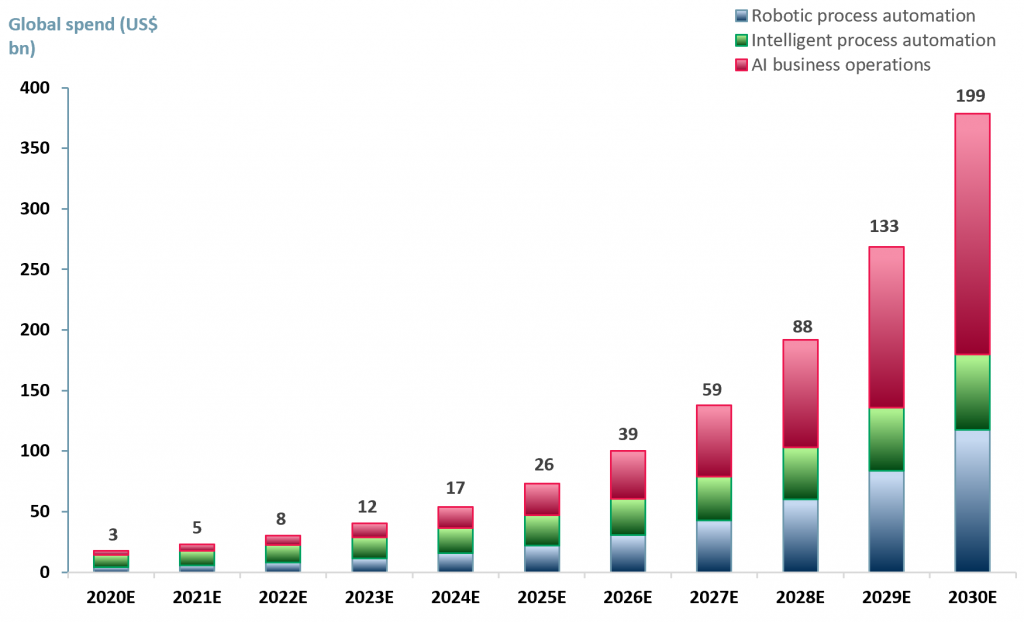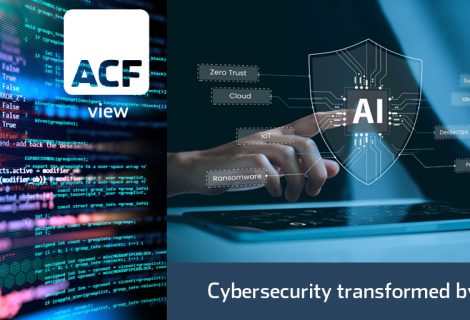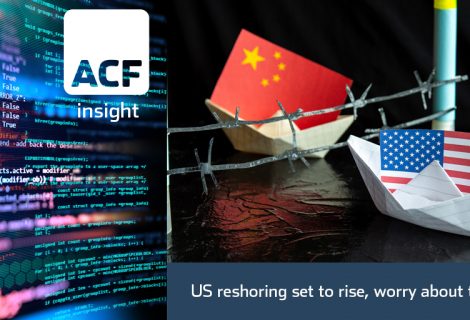The rise of AI on construction sites
An AI robotic drywaller has replaced skilled workers during the pandemic on US construction sites. The robot reduces the average drywalling time.
Drywall is a panel made of calcium sulphate dihydrate and drywalling is the skill of installing these walls or panels in buildings, but it should not be confused with the skill of plastering.
- Canvas, a US construction robotics company, has built a robot that is able to drywall with as much artistry and skill as a human worker.
- According to an International Data Corporation (IDC) report from January 2020, the demand for construction robots will grow annually by 25% through to 2023.
- The four-wheeled Canvas robot is the size of a cooker. Its main features are the robotic arm and its LiDAR (light detection and ranging) technology laser scanners.
- According to Alex Schreyer, director of the Building and Construction Technology Program at the University of Massachusetts, “Canvas is part of a boom in construction technology and robots along with AI are finding their way onto conventional work sites.”
- Diverse robotic equipment has the ability to emulate construction tasks such as welding, excavating, drilling, and brick-laying. This has been facilitated by several companies:
- ULC Robotics (a pioneer in Robotics-as-a-Service (RaaS) technology);
- Built Robotics (autonomous machinery);
- Volvo Group ((VOLV-B:STO) Collaborative Robots (Cobots) and Autonomous Transporting Vehicles (ATVs)).
The construction industry generates ~US $1.4trn annually, accounting for nearly 7% of US GDP. Given its size, the industry has very little adoption of automation and robotics.
In both the US and the UK, it is fair to suggest that building techniques have not really moved on since the age of Cathedral building – the 12th Century. The same cannot be said of certain construction techniques in Scandinavia.
We see the US and UK construction markets as ripe for innovation and change over the next decade.
According to Infoholic Research, the global construction robotics market is expected to reach US $190m by the end of 2025E.
Globally, the overall number of robots across all sectors increased to 2.25m in 2019 from 750k in 2000. ACF forecasts a growth in the trend of robots replacing skilled workers – an estimated 26m by 2030E (a 10-yr CAGR of 25%), as per exhibit 1 below.
Exhibit 1 – Global number of robots to replace human workers 2020E – 2030E
 Source: ACF Equity Research, CNBC
Source: ACF Equity Research, CNBC
According to a new International Data Corporation (IDC) Spending Guide (a global provider of market intelligence), the worldwide spending on Robotics Systems and Drones is forecasted to reach US$ 128.7bn in 2020E, a 17.1% increase from 2019.
Worldwide spending on Artificial Intelligence alone is expected to double over the next four years, reaching US$ 110bn in 2024E compared to US$ 50.1bn in 2020, a CAGR of 20.1%.
ACF estimates that over the following ten years spending for various AI segments worldwide will increase rapidly and could reach US$ 379bn by 2030E. The AI segment alone is forecasted at US$ 199bn in 2030E at a CAGR of 50%. It is a punchy estimate on our part, but we see a range of drivers including public acceptance as triggering a growth inflection point. (See exhibit 2 below.)
Exhibit 2 – Global spending on AI and Automation 2020E – 2030E
 Source: ACF Equity Research, HFS Research 2020
Source: ACF Equity Research, HFS Research 2020
The pandemic is only accelerating automation opportunities in construction, mainly due to social distancing regulations on construction sites. The pandemic has been the final forcing function – companies have had no option to re-evaluate supply lines and processes.
The current pandemic has some 12 months to run in our view, in spite of vaccines and the memory of the economic pain for a number of sectors including construction will last a lot longer…we think construction companies are privately taking a similar view.
AI and Robotics have found their way into almost all sectors and industries. Whether this will lead to a beneficial outcome for human society is yet to be seen, but we are hopeful.
Historically innovation has always been painful for a period of time for certain workforces, often skilled ones with a guild type mentality – and this period is often extended – 10-20 years. Education is the way out and by this we mean access to inexpensive training to re-skill.
For developing AI tech companies, this shift to digitalisation represents an optimistic future.
Investors increasing interest in the technology sector is also influencing the speed of implementation, the speed of digital transformation and the development of AI’s applicability.
Capital markets behaviour is on a never ending cycle of booms and busts. What we have learned from the Covid-19 pandemic, is that the amount of time it takes for markets to recover is now down to months and not years.
This expedited recovery is largely due to technological advancements in global communications (i.e. the internet and smart phones) and increased investments since the 1980s. With knowledge there is power, but with knowledge there is also transparency and infinite access to data.
It is no surprise that investors are drawn to the AI sector. Advanced technology as part of our every day is a lot closer than we think and the opportunities are endless.
Author: Anda Onu – Anda is part of ACF’s Sales & Strategy team. See Anda’s profile here
















